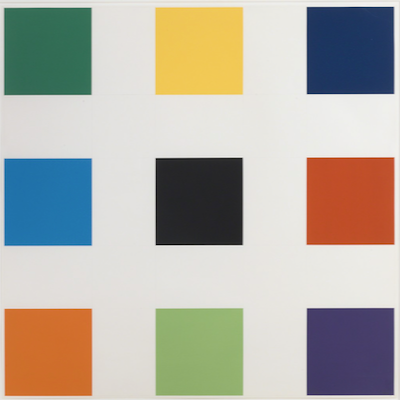
Details
Artist
Styles
// Vertigo by Victor Vasarely, created in 1982, is a silkscreen print that exemplifies the artist's exploration of optical illusions and spatial depth. This limited edition piece, produced in an edition of 65 with additional artist proofs, features a dynamic blue-and-white checkerboard pattern that forms a diamond shape within a larger grid. The central circular form and the distortion of squares toward the edges create an illusion of movement, as if the central shape is vibrating or pulsating outwards. The visual effect is dizzying, aptly evoking a sense of vertigo and challenging the viewer's perception of flatness versus depth. Vasarely’s precise arrangement of geometric forms and contrast between blue and white engage the eye in a rhythmic exploration, making the piece appear to shift as one’s gaze moves across it. Vertigo stands as a powerful example of Vasarely’s mastery in Op Art, transforming simple shapes into an immersive optical experience.
Vertigo, 1982
form
Medium
Size
67.3 x 58.4 cm
- Inches
- Centimeters
Edition
Price
- USD
- EUR
- GBP
Details
Artist
Styles
// Vertigo by Victor Vasarely, created in 1982, is a silkscreen print that exemplifies the artist's exploration of optical illusions and spatial depth. This limited edition piece, produced in an edition of 65 with additional artist proofs, features a dynamic blue-and-white checkerboard pattern that forms a diamond shape within a larger grid. The central circular form and the distortion of squares toward the edges create an illusion of movement, as if the central shape is vibrating or pulsating outwards. The visual effect is dizzying, aptly evoking a sense of vertigo and challenging the viewer's perception of flatness versus depth. Vasarely’s precise arrangement of geometric forms and contrast between blue and white engage the eye in a rhythmic exploration, making the piece appear to shift as one’s gaze moves across it. Vertigo stands as a powerful example of Vasarely’s mastery in Op Art, transforming simple shapes into an immersive optical experience.
- Recently Added
- Price (low-high )
- Price (high-low )
- Year (low-high )
- Year (high-low )
What is Hard Edge Art?
Hard Edge art is a style of abstract painting that became popular in the 1960s. It features areas of color separated by crisp, sharp edges that are painted with geometric precision. The term hard-edge painting was coined by art critic Jules Langsner to describe this approach, which contrasts with the softer, more fluid forms of other abstract styles.






































































